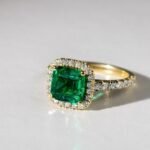Buying opals Australia: seven common blunders is an important topic since jewellery is a fantastic investment due to the uniqueness and beauty of the stone, which changes colour when turned. However, there are risks associated with this procedure.
In the last 30 years or more, astute marketers have discovered techniques to create gemstones like rubies, sapphires, emeralds, and, more lately, genuine Australian opals that seem authentic but are actually created in a lab.
If you want costume jewellery, that’s OK, but steer clear of this method if you want the real thing. Unfortunately, because genuine Australian opal is such a unique gemstone, many jewellers are unfamiliar with it and have misconceptions regarding its origin.
click here – Meaning Of Celebrating Raksha Bandhan Festival!!!
- Purchasing opals that will break or craze within a short period of time
If not purchased from reputable sources, opals and other gemstones such as emeralds have a tendency to break. Emeralds are frequently treated with oil to mask fractures. Opal fissures are more difficult to conceal, but because opal contains hydrated silica, they are easier to conceal.
This is acceptable if the opal comes from the Australian outback deserts, where it has been dried up for millions of years.
- Purchasing opals that will quickly lose their colour if submerged in water
Opals may change their colour when exposed to water because of the same reasons as the comments above; opals from moist places are also porous, which means the stone’s surface can act like blotting paper.
If you wear your genuine Australian opal ring in the shower or while doing the dishes, it will almost likely absorb the moisture and convert a lovely colour into an unsightly brown.
The fact that porous Australian opals for sales are frequently faceted like diamonds and sapphires rather than cut with a dome is a reliable indicator of their kind. This isn’t always the case, but the stone appears to be translucent because they’re frequently more translucent than opaque.
This is a clear sign that it is a stone that will most likely change colour. If you leave these stones in the light for a long time, the colour will return, but this is a risky technique because they are prone to cracking.
click here – 5 Tips to Improve Your Lesson Plan
- Buying opals without reading the fine print to ensure they aren’t “lab” or “man-made” opals
Even on certain well-known online buying sites, the promoters are unaware of the differences between natural and manufactured opal because they are not opal experts. As a result, individual promoters on these sites frequently conceal the true opal identification inside the body of lengthy explanations, and it’s all too easy to read a paragraph and miss the identification of “lab opal” or “created opal.”
Sure, most trustworthy sites will indicate this, but if you aren’t looking for it, you can miss it and end up paying for something that appears real but isn’t.





